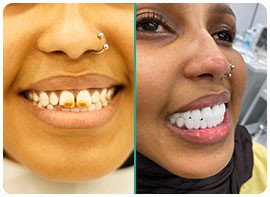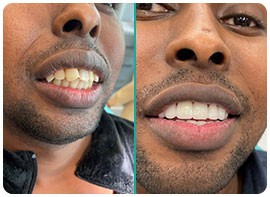Orthodontics is a specialty of dentistry branch that tries to prevent and treat this condition of individuals whose teeth are crooked or sparse, who have missing teeth, excess teeth or embedded teeth, who have too few or too many teeth during smiling, whose upper jaw and/or lower jaw are advanced or backward from normal.
Orthodontics, popularly known as braces treatment, includes the treatment of dental disorders that occur at an early age or occur at an advanced age because treatment is delayed.
Orthodontic treatment usually begins around the age of 9-14. However, the American Orthodontic Association recommends that all children should meet an orthodontist before the age of 7 in order to control the process of developing milk teeth and leaving their places on permanent teeth. In this way, possible orthodontic problems will be diagnosed earlier and solved more easily.
What is an Orthodontist?
Deformities of the teeth, congenital and subsequent shape and closing disorders of the jaw, jaw fractures, structural disorders, jaw level differences caused by the lower or upper jaw, are dentists with a specialty that treats jaw cyst problems.
Why Do Orthodontic Problems Occur?
In jaw disorders, the treatment method is decided by taking into account the patient's age. If the patient is in adolescence and has a condition where the lower and upper jaw structure is behind, treatment with orthodontic techniques is possible. If the patient is an adult, the treatment of skeletal disorders is carried out in cooperation with orthodontics and surgery. Due to functional disorders, jaw incompatibility may be observed in situations such as mouth breathing, for example. In a mouth-breathing person, the upper part of the jaw will be in a V-shape, as it will remain narrow.
Conditions such as using bottles and false pacifiers for a long time, finger sucking, nail biting can cause orthodontic disorders. These habits should be treated as early as possible.
How is Orthodontic Treatment Performed?
It is aimed not only at aesthetic concerns, but also at preventing gum diseases that may be encountered in the future, preventing problems in the jaw joint, ensuring chewing functionality and eliminating this problem for individuals with speech disorders.
According to the existing orthodontic problem, treatment methods can be determined with moving devices, functional devices and fixed devices. Simple orthodontic problems that are not at an advanced stage can be solved with rubber movable devices that the patient can use by inserting and removing.
It is of great importance that reinforcement therapies are not neglected in order to prevent backward deterioration in treatments performed with the termination of priority orthondotic therapies. Different devices that work passively can be used for this period.
What are the Methods Used in Orthodontic Treatment?
Orthodontic treatments are usually a progressive treatment method with the attachment of brackets to the tooth surfaces. There are many types of metal brackets, ceramic brackets, sapphire (ice) brackets, invisalign, damon (clamshell) metal bracket, damon (clamshell) transparent bracket, lingual bracket, etc. The brackets used vary according to the type and budget of the treatment performed.
How Should Oral and Dental Care be Performed After Orthodontic Treatment?
Teeth should definitely be brushed after every meal is eaten. Food residues that are likely to remain between the brackets should also be Decently cleaned.
Again, dental tires, which must be used according to the cases in orthodontic treatment, can also damage both your teeth and gums, as they cause the accumulation of bacteria and microorganisms in the mouth. The most important way to prevent these is to take care of your oral and dental health.








